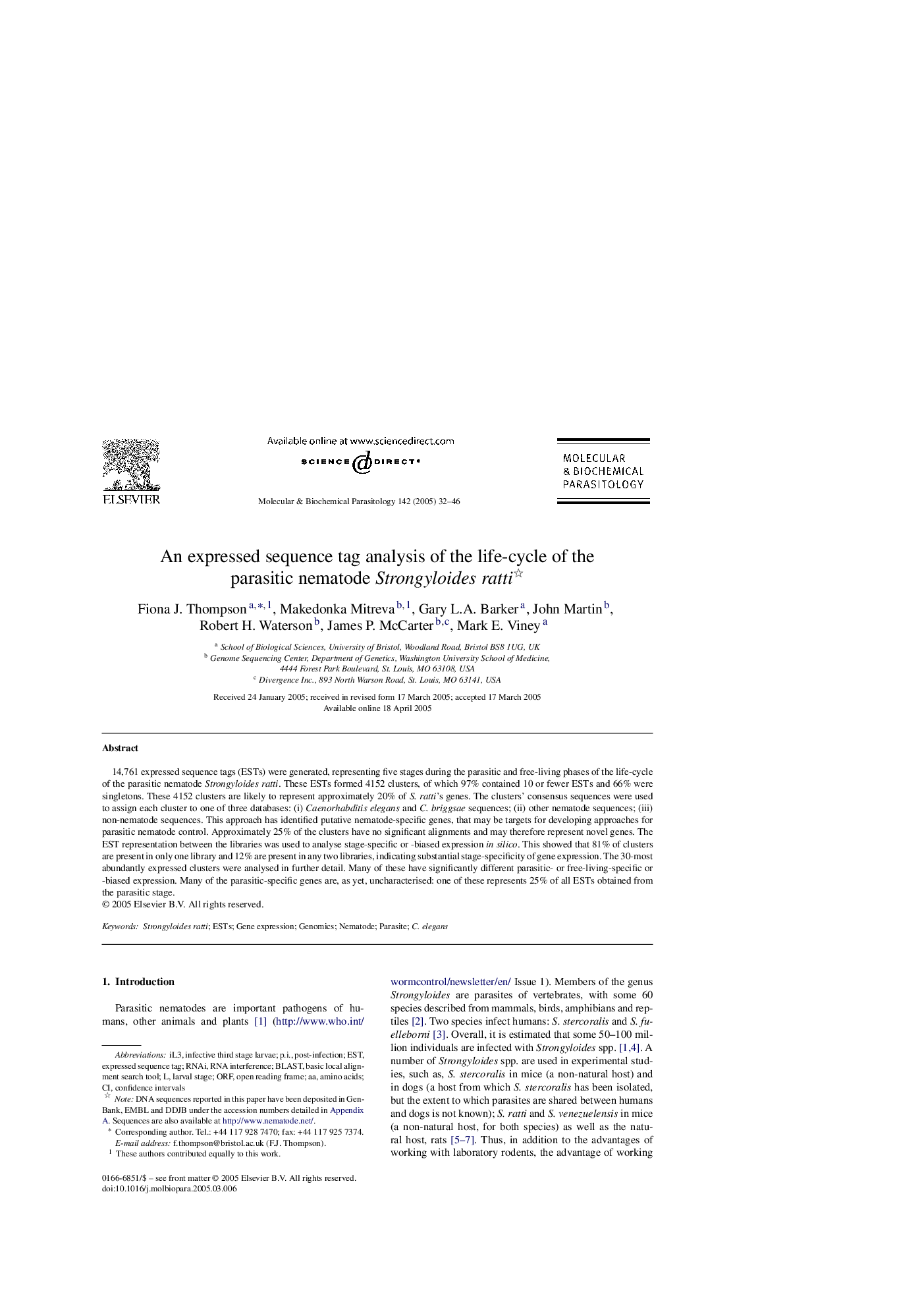| کد مقاله | کد نشریه | سال انتشار | مقاله انگلیسی | نسخه تمام متن |
|---|---|---|---|---|
| 9140019 | 1163392 | 2005 | 15 صفحه PDF | دانلود رایگان |
عنوان انگلیسی مقاله ISI
An expressed sequence tag analysis of the life-cycle of the parasitic nematode Strongyloides ratti
دانلود مقاله + سفارش ترجمه
دانلود مقاله ISI انگلیسی
رایگان برای ایرانیان
کلمات کلیدی
IL3Strongyloides rattip.i.ORFC. elegansESTs - EST هاRNA interference - RNA تداخل کنندهRNAi - RNA سرکوبگر،RNA مداخلهگر، RNA خاموش کنندهBasic Local Alignment Search Tool - ابزار جستجوی محلی سازگاری محلیEST - استAmino acids - اسید آمینه یا آمینو اسیدBlast - انفجارParasite - انگلGene expression - بیان ژنExpressed Sequence Tag - تکرار اظهار نظرconfidence intervals - فاصله اطمینانopen reading frame - قاب خواندن بازInfective third stage larvae - لارو سوم مرحله عفونیLarval stage - مرحله لاروpost-infection - پس از عفونتGenomics - ژنومیکNematode - کرمهای لولهای
موضوعات مرتبط
علوم زیستی و بیوفناوری
بیوشیمی، ژنتیک و زیست شناسی مولکولی
زیست شناسی مولکولی
پیش نمایش صفحه اول مقاله

چکیده انگلیسی
14,761 expressed sequence tags (ESTs) were generated, representing five stages during the parasitic and free-living phases of the life-cycle of the parasitic nematode Strongyloides ratti. These ESTs formed 4152 clusters, of which 97% contained 10 or fewer ESTs and 66% were singletons. These 4152 clusters are likely to represent approximately 20% of S. ratti's genes. The clusters' consensus sequences were used to assign each cluster to one of three databases: (i) Caenorhabditis elegans and C. briggsae sequences; (ii) other nematode sequences; (iii) non-nematode sequences. This approach has identified putative nematode-specific genes, that may be targets for developing approaches for parasitic nematode control. Approximately 25% of the clusters have no significant alignments and may therefore represent novel genes. The EST representation between the libraries was used to analyse stage-specific or -biased expression in silico. This showed that 81% of clusters are present in only one library and 12% are present in any two libraries, indicating substantial stage-specificity of gene expression. The 30-most abundantly expressed clusters were analysed in further detail. Many of these have significantly different parasitic- or free-living-specific or -biased expression. Many of the parasitic-specific genes are, as yet, uncharacterised: one of these represents 25% of all ESTs obtained from the parasitic stage.
ناشر
Database: Elsevier - ScienceDirect (ساینس دایرکت)
Journal: Molecular and Biochemical Parasitology - Volume 142, Issue 1, July 2005, Pages 32-46
Journal: Molecular and Biochemical Parasitology - Volume 142, Issue 1, July 2005, Pages 32-46
نویسندگان
Fiona J. Thompson, Makedonka Mitreva, Gary L.A. Barker, John Martin, Robert H. Waterson, James P. McCarter, Mark E. Viney,